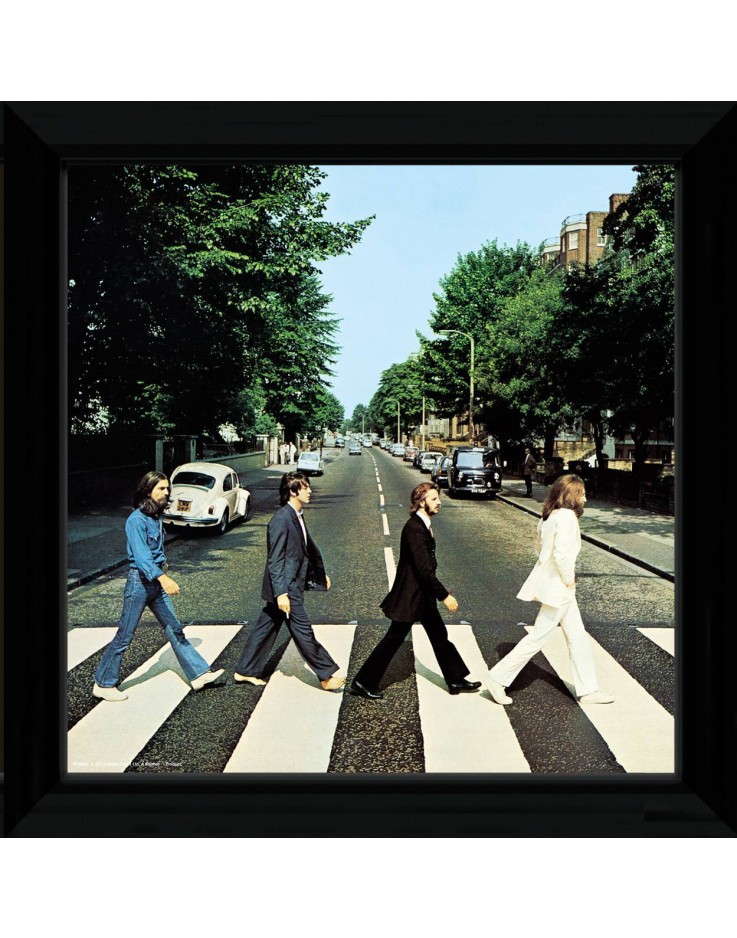The Beatles have broken their own record for the album with the longest gap between topping the charts as Abbey Road hit the top spot 50 years after is original release.
The Fab Four’s 11th record, which includes hits such as Come Together and Oh! Darling, has now been released as a special anniversary edition featuring unheard material.
The record was previously held by Sgt Pepper’s Lonely Hearts Club Band, often considered the band’s best work, which had a gap of 49 years and 125 days.
Abbey Road, however, ended its initial 17-week run atop the charts on January 31 1970 – meaning it now holds a winning gap of 49 years and 252 days.
Like Abbey Road, Sgt Pepper’s returned to number one on the 50th anniversary of its release in June 2017.
Sir Paul McCartney hailed the enduring success of the record, saying: “It’s hard to believe that Abbey Road still holds up after all these years. “But then again it’s a bloody cool album.”
It is also the week’s best-selling vinyl, shifting just under 9,000 physical copies.
Abbey Road’s album cover, showing Sir Paul, John Lennon, Sir Ringo Starr and George Harrison striding single file over the zebra crossing outside the north-west London studios, is one of the most widely recognized in music history.
If the Beatles knew Abbey Road was going to be the last album they’d make, they sure didn’t let on during the recording. (Though Harrison admitted later that “it felt as if we were reaching the end of the line.”) There’s a finality to the songs that surfaces in hindsight but, for the most part, they’re not mournful. In fact, many are hopeful (parts of the medley), celebratory (“Here Comes the Sun”), joyful (“Octopus’s Garden”) and goofy (“Maxwell’s Silver Hammer”).
It was a fitting end to the band – one marked, appropriately, by a song called “The End,” which features dueling guitars by Harrison, Lennon and McCartney, a rolling drum solo by Starr and one of the most poignant last words ever to close an album: “And in the end, the love you take is equal to the love you make.”
The sessions wrapped on Aug. 20, and a little more than a month later, on Sept. 26, Abbey Road was released. By that time, Lennon had played his first solo show and told the other members he was leaving (though nobody else knew about this then). For the next few months, the Beatles resumed work individually on the abandoned Get Back tapes, getting them in order for what would be their final album the next year.
Abbey Road hit No. 1 and stayed there for 11 weeks, longer than any other album of theirs besides Sgt. Pepper’s. “Come Together” and “Something” were released as a double A-side the same time as the album, and also made it to the top of the chart (the latter was Harrison’s only No. 1 Beatles song). Since its release, Abbey Road become one of the Beatles’ landmark records, a pivotal point in their short, storied career.
All these years later, its legacy spans nearly every aspect of the project – from its cover (the only one that doesn’t include neither the band’s name or the LP’s title, the famous crossing photo has been one of their most iconic images) to the music inside (its songs have been covered by everybody from Frank Sinatra to Tenacous D; that eight-song, 16-minute medley that fills out side two ranks as one of the Beatles’ best moments on record).
They didn’t sound like a band coming apart at the time, and that’s part of this album’s lasting splendor. Even as they were splitting into four separate pieces, the Beatles pulled together the album that they had set out to make. Once again, their determination paid off. Even if it was for only one final round.
It’s hard to believe that’s its been over 50 years since the Beatles came onto the scene, setting the bar for all of us who grew up playing music or listening to pop music.
We recently watched the film “Yesterday” that puts things in perspective for the new millennials who were not there to witness that era.
Of course, there are some new songs that are well written and performed, but it is not the sixties when it was more the norm.

